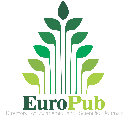Sustainable menstruation, a change in the rules: from continuity to awareness
DOI:
https://doi.org/10.51302/marketing.2023.19367Keywords:
sustainable menstruation, menstrual cup, menstrual panties, reusable pads, menstrual hygieneAbstract
Sustainable menstruation has gained significant momentum within the field of health and hygiene as a proactive means to promote social awareness, visibility, and responsibility. This study aims to assess the acceptance, usage, and awareness levels of sustainable period management options such as reusable pads, menstrual cups, and period underwear in Spain. To achieve this, an online survey was conducted in Spain, targeting a representative sample of individuals across the menstruation spectrum, from menarche to menopause. The survey collected data on menstrual hygiene practices, routines, and attitudes towards adopting the aforementioned sustainable products. Results revealed a great degree of familiarity with these alternatives, their benefits and advantages, showing a positive trend for future adoption. Nonetheless, it is evident that there is a compelling need to continue pursuing innovative solutions that promote health, sustainability, and equality in menstrual hygiene management in the country. Upon in-depth analysis of the results, this dissertation identifies potential areas for future research and paves the way for a more comprehensive, inclusive, interdisciplinary, and cross-sectional approach to this topic.
Downloads
References
Alvira, F. (2011). Cuadernos Metodológicos. La encuesta: una perspectiva general metodológica. Centro de Investigaciones Sociológicas.
Creswell, J. W. (2014). Research design. Qualitative, quantitative, and mixed methods approaches. (4.a ed.). SAGE.
EDE Fundazioa. (2021). Estudio sobre la pobreza e higiene menstrual en la CAE. Emakunde – Instituto Vasco de la Mujer. https://www.emakunde.euskadi.eus/contenidos/informacion/publicaciones_informes/es_emakunde/adjuntos/pobreza_higiene_menstrual_cae.pdf
Flores Ruiz, E., Miranda Novales, M. G. y Villasís Keever, M. Á. (2017). El protocolo de investigación VI: cómo elegir la prueba estadística adecuada. Estadística inferencial. Revista Alergia México, 64(3), 364-370. https://doi.org/10.29262/ram.v64i3.304
Gómez, T. (2017). La edad media de la primera regla se adelanta. Clínica Ginecológica. https://www.clinicaginecologica.org/la-edad-media-de-la-primera-regla-se-adelanta/#:~:text=Hace%20100%20a%C3%B1os%2C%20la%20edad,Seg%C3%BAn%20la%20Dra
Goodman, M., Adams, N., Cornell, T., Kreukels, B. P., Motmans, J. y Coleman, E. (2019). Size and distribution of transgender and gender nonconforming populations. Endocrinology and Metabolism Clinics of North America, 48(2), 303-321. https://doi.org/10.1016/j.ecl.2019.01.001
Illa García, A. (2018). La revolución de la copa menstrual. Universitat de Barcelona. https://diposit.ub.edu/dspace/handle/2445/125417
INE. (2022a). Estadística del padrón continuo. INE. https://www.ine.es/jaxi/Datos.htm?path=/t20/e245/p08/l0/&file=01002.px#!tabs-grafico
INE. (2022b). Población por edad (grupos quinquenales). INE. https://www.ine.es/jaxi/Tabla.htm?path=/t20/e245/p08/l0/&file=01002.px&L=0
Lloyd Wright, K. B. F. (2005). Researching internet-based populations: Advantages and disadvantages of online survey research, online questionnaire authoring software packages, and web survey services. Journal of Computer-Mediated Communication, 10(3). https://doi.org/10.1111/j.1083-6101.2005.tb00259.x
Miller, R. E. (2018). ¿When will I get my period? Nemours KidsHealth. https://kidshealth.org/es/kids/when-period.html
Nikolopoulou, K. (2022). What Is snowball sampling? Scribbr. https://www.scribbr.com/methodology/snowball-sampling/#:~:text=Snowball%20sampling%20is%20a%20non,people%20with%20a%20rare%20disease
Osvaldo, H. G. (2021). Aproximación a los distintos tipos de muestreo no probabilístico que existen. Revista Cubana de Medicina General Integral, 37(3). http://scielo.sld.cu/scielo.php?script=sci_arttext&pid=S0864-21252021000300002
Planned Parenthood. (2020). El periodo no es solo cosa de mujeres. Planned Parenthood. https://www.plannedparenthood.org/es/blog/el-periodo-no-es-solo-cosa-de-mujeres-2
Rodríguez Álvarez, S. (2021). El reto de legislar sobre los derechos trans sin saber cuántos ni cómo son. InfoLibre. https://www.infolibre.es/politica/reto-legislar-derechos-trans-son_1_1195059.html
Roqueta, S. (2021). Compresas reutilizables para una menstruación sostenible y segura. Objetivo Bienestar. https://www.objetivobienestar.com/sostenibilidad/compresas-reutilizables-menstruacion- sostenible-segura_54681_102.html
Sanoja, M. (2020). Ni todas las mujeres menstrúan ni todas las personas que menstrúan son mujeres. El País. https://elpais.com/buenavida/2020-06-19/ni-todas-las-mujeres-menstruan-ni-todas-las-personas-que-menstruan-son-mujeres.html
Sociedad Española de Ginecología y Obstetricia. (2013). Protocolo SEGO. Amenorrea primaria y secundaria. Sangrado infrecuente (actualizado febrero 2013). Progresos de Obstetricia y Ginecología, 56(7), 387-392. https://doi.org/10.1016/j.pog.2013.04.006
Zurita Sánchez, M. C. (2020). La copa menstrual como alternativa para el cuidado del medio ambiente. Universidad San Francisco de Quito. https://repositorio.usfq.edu.ec/handle/23000/10462
Downloads
Published
How to Cite
Issue
Section
License
Copyright (c) 2023 Laura López Mateos, Nathalie García-Erviti Nijeboer

This work is licensed under a Creative Commons Attribution-NonCommercial-NoDerivatives 4.0 International License.





















